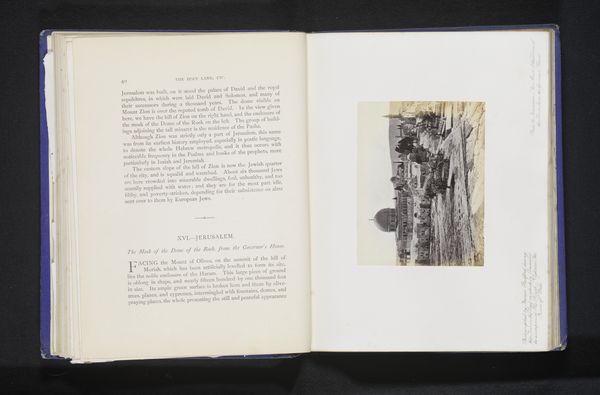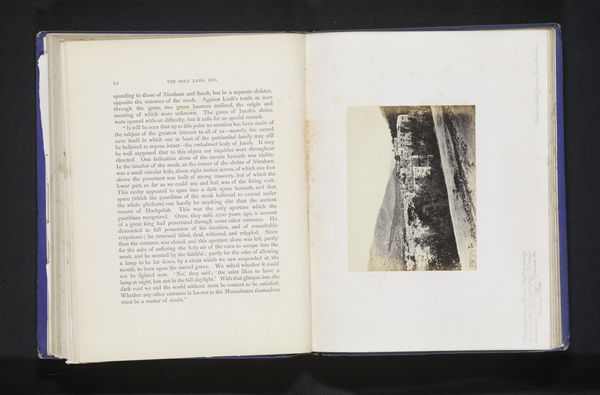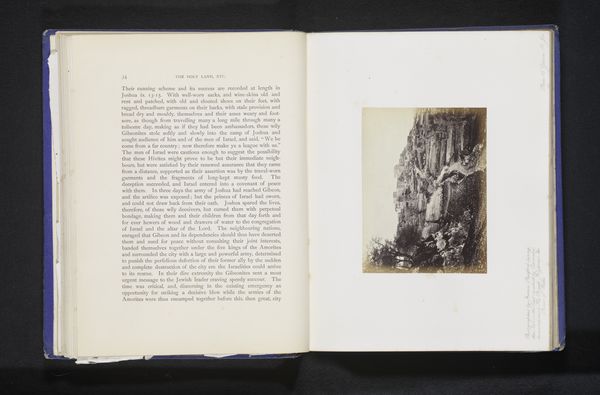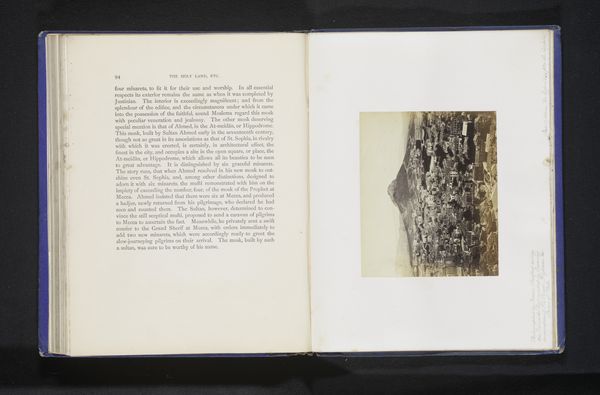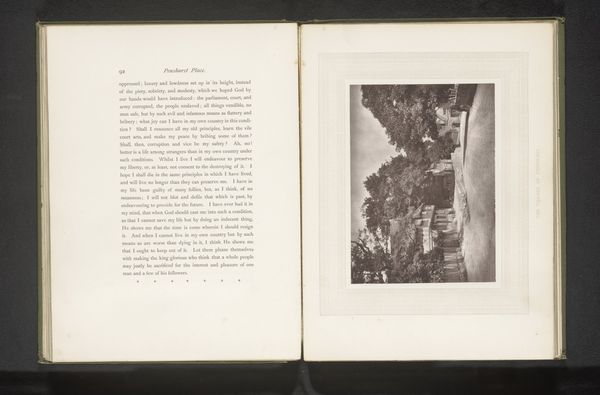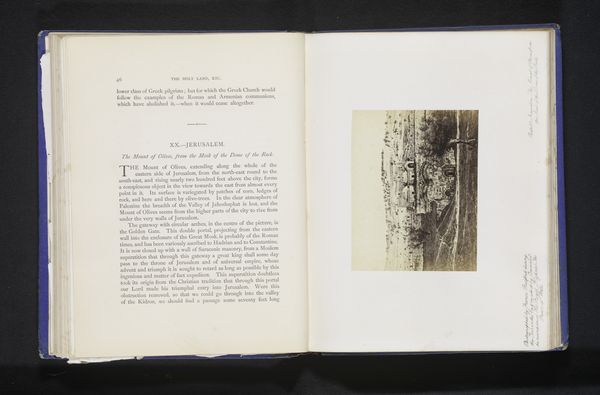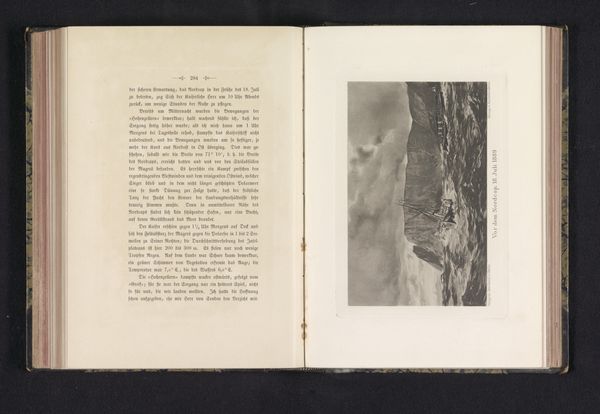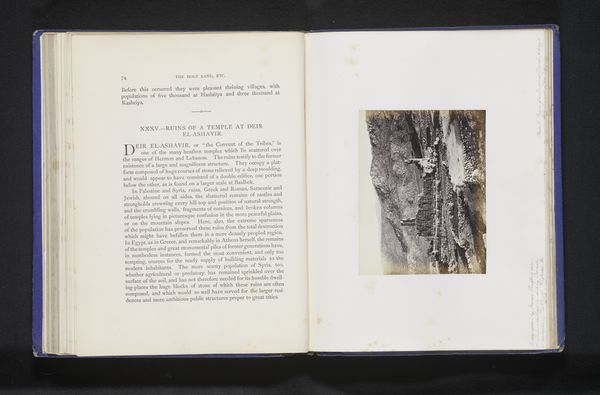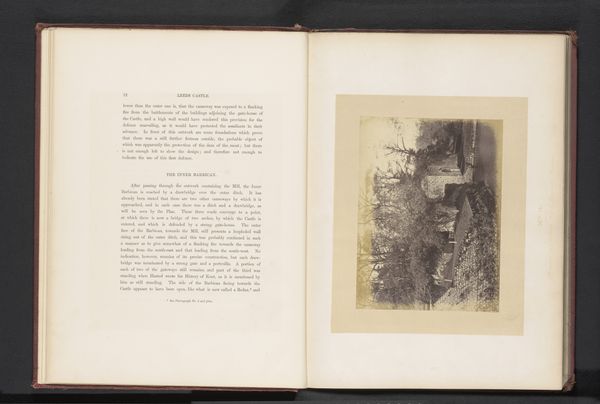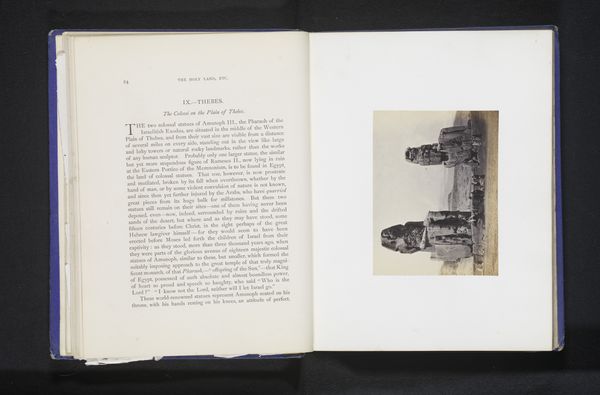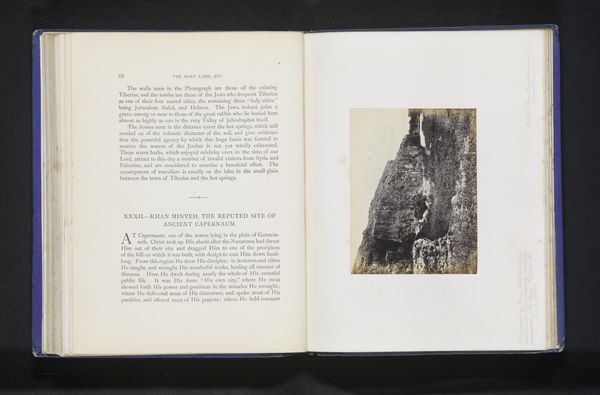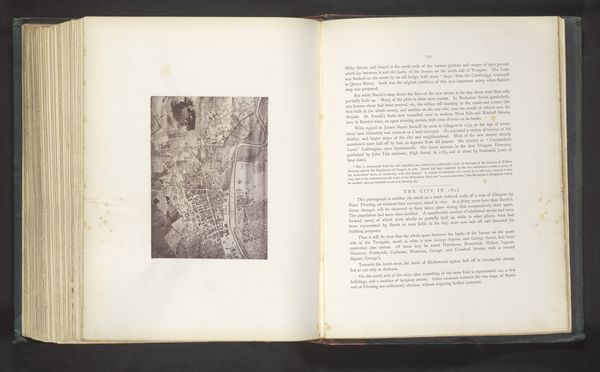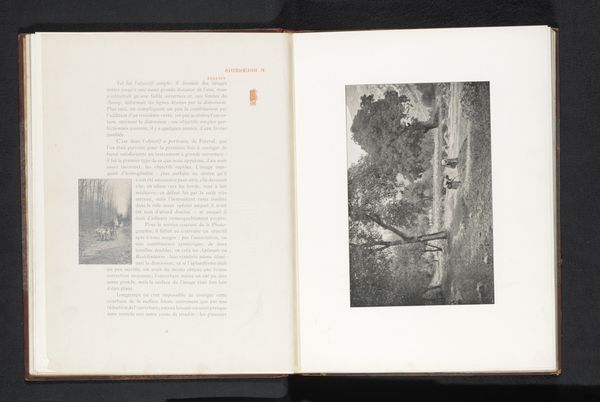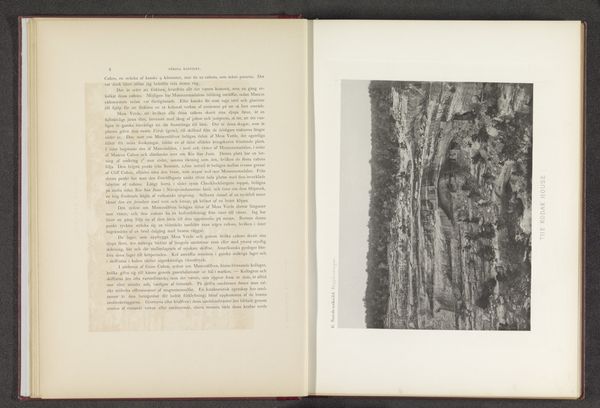
mixed-media, collage, print, photography, albumen-print
#
mixed-media
#
collage
# print
#
landscape
#
photography
#
ancient-mediterranean
#
orientalism
#
albumen-print
Dimensions: height 96 mm, width 128 mm
Copyright: Rijks Museum: Open Domain
Curator: Francis Bedford created this print, likely before 1866, capturing a "General view of the ruins [at] Baalbek" using an interesting combination of collage and mixed-media. Editor: It certainly conveys a sense of faded grandeur. The monochrome tones and the textures hint at a layered history—both the subject and the material. There is a sense of melancholy within the ruins themselves, further reinforced by the muted colors and crumbling quality. Curator: The photograph, pasted onto the book's page, brings up the wider context of 19th-century Orientalism. This wasn’t just an objective record but a cultural encounter framed by colonial gazes and shaped the way the West saw the East, reducing it, at times, to images of exotic decay and imperial possession. Editor: Precisely. Images such as these weren't neutral documents. Their composition, what's included and excluded, actively participates in broader cultural narratives—specifically colonial exploitation, cultural extraction, the imbalance of power. What do the symbols tell us of identity in this place? Is it about conquest or appropriation? How does this image speak of the land itself? Curator: Symbols always carry echoes. Here, even without distinct religious iconography, the architectural remnants –the columns, the suggestion of monumental scale –evoke ideas of forgotten gods, empires that rise and fall. We see remnants of power structures as well as a continuity. The physical decay reveals the cyclical nature of civilizations, each building on or dismantling the other. Editor: It’s a haunting reminder of temporal power and cultural erasure, which compels us to consider what meanings were assigned by those whose lives intersected these buildings and monuments through the years, the original people who walked and built those lands and held cultural and religious values. We see through the perspective of Orientalism how the focus is on the “ruins” – an emphasis on what colonizers viewed as obsolete instead of cultural significance. Curator: A sobering thought to end with: how perception truly determines the image. Editor: Indeed; and this image gives us reason to further examine its complexities, both visual and cultural.
Comments
No comments
Be the first to comment and join the conversation on the ultimate creative platform.
